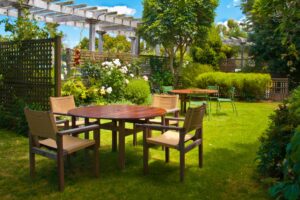Grow and Care for Blue Chalk Sticks

Blue Chalk Sticks have beautiful blue finger-like leaves.
A drought-tolerant South African native they are an attractive ground cover feature or accent in planter boxes.
Quick Tips
- Blue chalk sticks will thrive best in full, direct sunlight for 6 to 8 hours each day. You can also grow them outdoors in partial shade.
- Limit watering and allow periods of dryness between waterings.
- They don’t need much fertiliser. Fertilise with low-nitrogen plant food, diluted or use a succulent plant food for container plants.
Sunlight and Placement
They thrive best full, direct sunlight for 6 to 8 hours each day, but you can also grow it outdoors in partial shade. Partial shade helps encourage the spread of this attractive, matting groundcover. Overhead protection from trees, if you can find this and still have a dappled sun area, is an excellent place to plant or locate containers outside.
If you are considering them as an indoor feature find a sunny spot next to the brightest window you have. If they don’t get enough sunlight, they will stretch and wilt.
Watering
Once established Blue Chalk Sticks are drought tolerant. They rarely need water during the growing season. If you have a new one, we recommend watering up to once a week during the first spring and summer.
Soak your plant deeply every and then let the soil dry out completely between sessions. When the plant matures, you can space out watering sessions to every three or four weeks. As a general rule let the soil dry out completely between watering.
Soil and Drainage
Whether you place them in the ground or in a pot, like with all succulents, plant them in a fast-draining, gritty mix. Sandy soils are fine, but clay soils can are not suitable.
The best soil will hold enough water for Blue Chalk Sticks to absorb but will still dry out quickly enough so the roots won’t rot. Succulents tend to absorb water from the air around them. If they continuously sit in wet soil the roots, it will cause the plant to die.
When it comes to feeding, we recommend fertilising with low-nitrogen plant food.
Other great resources
-
 13, Jun, 2025
13, Jun, 2025How to Start a Garden Design Project: Step-by-Step Planning Guide for Beginners
At Diaco’s, we know that creating a beautiful garden starts... -
 27, May, 2025
27, May, 2025Smart Garden Layout Ideas: How to Maximise Your Outdoor Space
At Diaco’s, we believe every garden has potential. Whether you’ve... -
 9, May, 2025
9, May, 20257 Garden Design Principles to Transform Your Outdoor Space
At Diaco’s, we know that creating a garden isn’t just...


